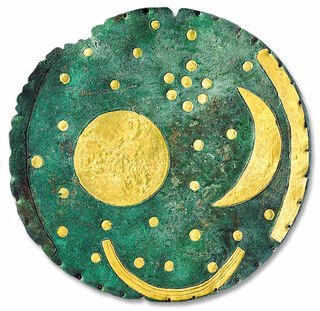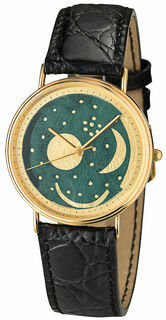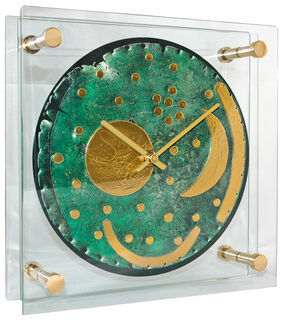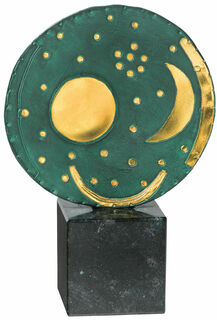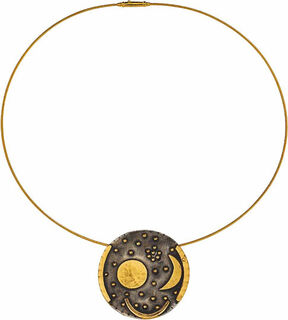One of the 427 UNESCO "Memory of the World Programme"
The Nebra Sky Disk is one of the most significant archaeological discoveries of recent decades and a masterpiece of Bronze Age art. It is the oldest known representation of the sky on a circular bronze plate with golden applications. It shows the sun, the moon and the stars, and possibly a representation of the Pleiades star cluster. The Nebra Sky Disc was made about 3600 years ago in present-day Saxony-Anhalt, Germany, and was probably a cultic object used for observing and calculating the seasons. The Nebra Sky Disc was discovered in 1999 by looters on Mittelberg hill and, after a spectacular rescue operation, was handed over to the State Museum of Prehistory in Halle. The Nebra Sky Disk is a document of UNESCO's Memory of the World Programme and can be viewed at the State Museum of Prehistory in Halle.
The Nebra Sky Disk is not only a fascinating artwork but also a key to understanding Bronze Age culture and religion. It reveals how people perceived and interpreted the cosmos at that time and how they synchronised their ritual actions with the movement of celestial bodies. It is thus a testimony to the beginnings of astronomy and calendar reckoning in Europe.

